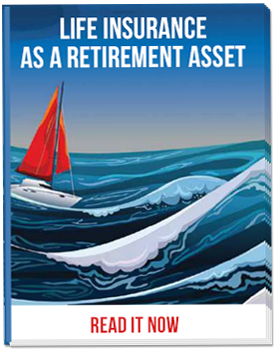Wright Financial Case Studies
Case Studies
Our practice serves a wide range of clientele coming from many walks of life and with different needs for insurance and planning. This section portrays some of their stories from where you can derive the understanding of how our firm works to meet our clients’ needs.
Insurance planning today is far more diversified from the days of the late 80’s and 90’s. Life insurance and long term care products are significantly more versatile and flexible in their design than in the past. Therefore, the planning process becomes an ever more collaborative work between an insurance expert, the proposed insured and quite often, their financial advisor, estate planner and/or accountant. The purpose of the case studies below are to show you to what great extent we go, ensuring that the best possible product, with a top-rated carrier, offering competitive pricing and aggressive underwriting is utilized so that we can deliver a top tier policy with a flexible design for you.

David Wolfe, age 45, is a very successful attorney and close friend. Recently we were playing a round of golf and got talking about his 401(k) plan at work. He is making the maximum contributions to his 401(k) plan of $18,500/year and the law firm does not offer a match to his contributions. So, I asked him, “If you could put more into your 401(k), would you?”
His response was, “I would. $50,000/year for sure; maybe more.”
We put together an analysis that compared a “Pretend 401(k) Plan” to and Indexed Universal Life (IUL) Insurance Policy when using the same growth rate assumptions.
We assumed that David could, in fact, contribute $50,000/year to this “Pretend 401(k) Plan” for the next five years. Because 401(k) Plan contributions are tax deductible and David is in a 37% marginal tax bracket, he saves $18,500/year in income taxes.
We compared the results to an IUL policy with scheduled premiums of $31,500/year for the next five years. In this situation, David would not get the income tax deduction, so his net contribution of $31,500 to the policy is equivalent to the contributions he is making to the “Pretend 401(k) Plan.”
In the analysis below, you’ll see annual income distributions of $34,657 starting at David’s age 65. Distributions from a 401(k) are taxable as ordinary income, while the distributions from the life insurance policy are income tax-free. Because of the unique tax advantages associated with life insurance, the policy is able to provide income to David for his entire life, but his 401(k) plan is completely exhausted by age 81.
If David lives to age 90, he will receive $334,071 more retirement income from the policy than he would get from his “Pretend 401(k) Plan” and his wife (the beneficiary) will receive the remaining tax-free death benefit of approximately $300,000 when he passes away. His “Pretend 401(k) Plan” would be exhausted and therefore leave no benefit for his wife.
As you can imagine, this was a game-changer for the Wolfe Family!

Charles is a 51 year old business owner. He is married and has two kids. His son is in college while the daughter has just started high school. With a net worth close to $20MM and growing, Charles’ main concern was the estate tax liability his family would be faced with in the event of his untimely death. An additional concern he had was the need for long term care coverage. He did not have that type of coverage but realized the importance of having it, given the aging baby boomer population that he represented. He was looking to purchase a LTC policy and a separate life insurance policy but was sure that the premiums would be quite hefty. He also knew that most stand-alone LTC policies run the risk that if the benefits are never claimed, there is no refund of the premiums paid, therefore, it would be a ‘use it or lose it’ dilemma. He approached us and asked us to review his life insurance needs and discuss his available options. As is our practice, we asked him to go through preliminary underwriting so we could assess his health rating. Charles, being in perfect health, received excellent underwriting offers from various, top-rated carriers. We were able to underwrite him for $13MM of life insurance, owned in a trust, with a single premium of $1.5MM. The new policy he purchased would also give him a long term care coverage rider that would accelerate the death benefit to pay for long term care needs. This product is ideal for an insured who is concerned about their future long term care needs but also desires to protect the family or leave a legacy for loved ones with a financial benefit. Overall, we improved Charles’ situation by ensuring that the proper amount of coverage was available to meet his future estate tax liability, provided a LTC benefit and freed him of his worries of paying ongoing premiums.

Allen is 62 years old while his wife, Amanda is 59. They are both physicians. They had recently stopped paying premiums on their policies which had reached a position of being self-supportive. The older policies were performing well so we advised them to leave them intact. However, their objective was to increase their overall insurance as a means of paying any estate taxes that would come due upon both of their deaths. They each owned roughly $1.4MM of permanent insurance which no longer required the premiums of $8,000 and $7,000, respectively. Their estate roughly $18MM. The solution was to obtain a 2nd to Die Survivorship policy for an additional $1.4MM and apply the combined $15,000/yr premiums that had become available from the individual policies. We designed the appropriate product from a carrier that gave them the most favorable ratings. Additionally, to move the life insurance benefits out of their estate, we proposed the ownership of all three policies to be in an Irrevocable Life Insurance Trust. Their objective was never the cash value, rather a higher death benefit to cover the estate taxes and leave a larger estate for their heirs, the two children, who would one day be starting their own families. By our proposed plan, we were able to increase their coverage from a combined $2.8MM to $4.2MM.

Ben is 47 years old. He is a successful and highly paid marketing executive. His objective was to provide for additional supplemental retirement income. He had already maxed out on his company 401k plan but still had funds available to invest. We advised him of a plan that would protect his family in the event of his death yet allow him to draw income in his golden years. With a wife and two kids, he felt it necessary to revamp his portfolio to provide more funds to the family in case of a premature death. With retirement 18 years ahead, he wanted to be certain that our proposed plan would provide for a level of income (when added to his Social Security and 401k benefits), which would allow him to maintain his current standard of living. Ben had approximately $36,000 per year in additional funds to invest. We proposed an indexed universal life policy with the potential for growth and the safety of a 0% floor. The design he agreed upon was a $1.6MM death benefit policy with a $36,000 premium to age 65. At 65, he would receive $100,000 per year for 15 years of tax-free income. We shopped the market on his behalf and delivered on a policy that increased his death benefit by $1.6MM. Ben is now able to put his mind to rest knowing that he now has a total of almost $2MM of life insurance coverage and an additional source of retirement income that improves his overall insurance portfolio.

Gabe is 48 years old and a restaurant owner. He is married to Patricia and they have 4 kids ranging in age from 11 to 19. Being a small business owner he has ups and downs in his cash flow. Quite often he has thought about cashing in his permanent policies and switching to term simply for the cost reduction. He previously had $2.1MM of permanent coverage, comprised of various policies totaling $19,300/yr in lifetime premiums, with a combined cash value of $268,000. He did not like the uncertainty of his cash flow combined with the $19,000 of annual premiums. Instead he was focusing on a 20 year term policy at a premium of $5400/yr. He also had the need and desire to purchase a separate long term care policy, but like many of our clients, he was concerned about the steep pricing and no cost recovery if he never used it. With regard to the life insurance he was looking to get, we asked him what he would do after 20 years when the term life policy would run out. He felt confident that the cash value from his previous policies that he would have invested elsewhere, would yield him high returns to cover the financial needs of his family. His plan did not take into account the taxation of the gains in his side investment. We then proposed using the same $268,000 as a tax free transfer to a new policy for $2.2MM with no additional out of pocket premiums. We helped him free up $19,000 from his cash flow to use elsewhere and maintain a similar $2.2MM permanent coverage as he previously had. In addition, and to his pleasant surprise, we were able to incorporate a long term care rider for the full benefit of $2.2MM within the same policy. The beauty of this design was that if he only used a partial benefit, he would still have the remainder of the funds available as a death benefit for his beneficiaries. The new policy proved to have better pricing, more potential for growth, flexibility in premium payments and the peace of mind for having a built-in long term care rider.

Peter is 53 years old, married and has 3 children. He asked us to take a look at his insurance portfolio to see if we can improve his situation. He had done well for himself over the years, accumulating a mass of wealth from inheritance and his own business ventures. His estate was worth $40MM. Peter’s only shortfall was that he had not done the proper planning to protect his large estate from taxes. Together, we established that he had a need for $10MM of life insurance coverage. He could have opted to pay the premiums out of pocket until age 65 but instead, we proposed a premium financing strategy. This method allowed Peter to borrow the premiums from an outside commercial lender and use his existing policies and other assets as collateral. Now, Peter only pays the interest due on the borrowed money and in the 10th year he will repay the outstanding loan by withdrawing cash value from this new policy. Even after the withdrawal, there will be sufficient policy value left to cover the internal costs of insurance, so Peter is not required to pay premiums out of pocket. This was a win-win situation for Peter, especially in light of the low interest rate environment.
In Conclusion
It should be noted that all the scenarios described are actual cases written through Wright Insurance Planning, LLC. The names have been changed to protect the privacy of each client. Every case we design will differ on its own merit. The objective here is to simply show the various methods of improving a client’s insurance situation based on their current and future needs. Our readers will agree that times have changed and the insurance industry continues to go through rigorous revamping of their underwriting procedures, pricing methodology and reduction in the costs of insurance. Strong market forces, coupled with stringent competition and improved mortality experience, has led to these improvements. These are some of the key factors in our ability to improve our valued clients’ personal and business situations. We take it upon ourselves to inform our clients of their available options. This is how we serve you best, by providing the most accurate information and case design ideas.
Quick Links
Contact Info
Wright Insurance Planning, LLC
Agent:
Christopher D Wright, CLU
Email:
[email protected]
Fax:
314-698-4723




